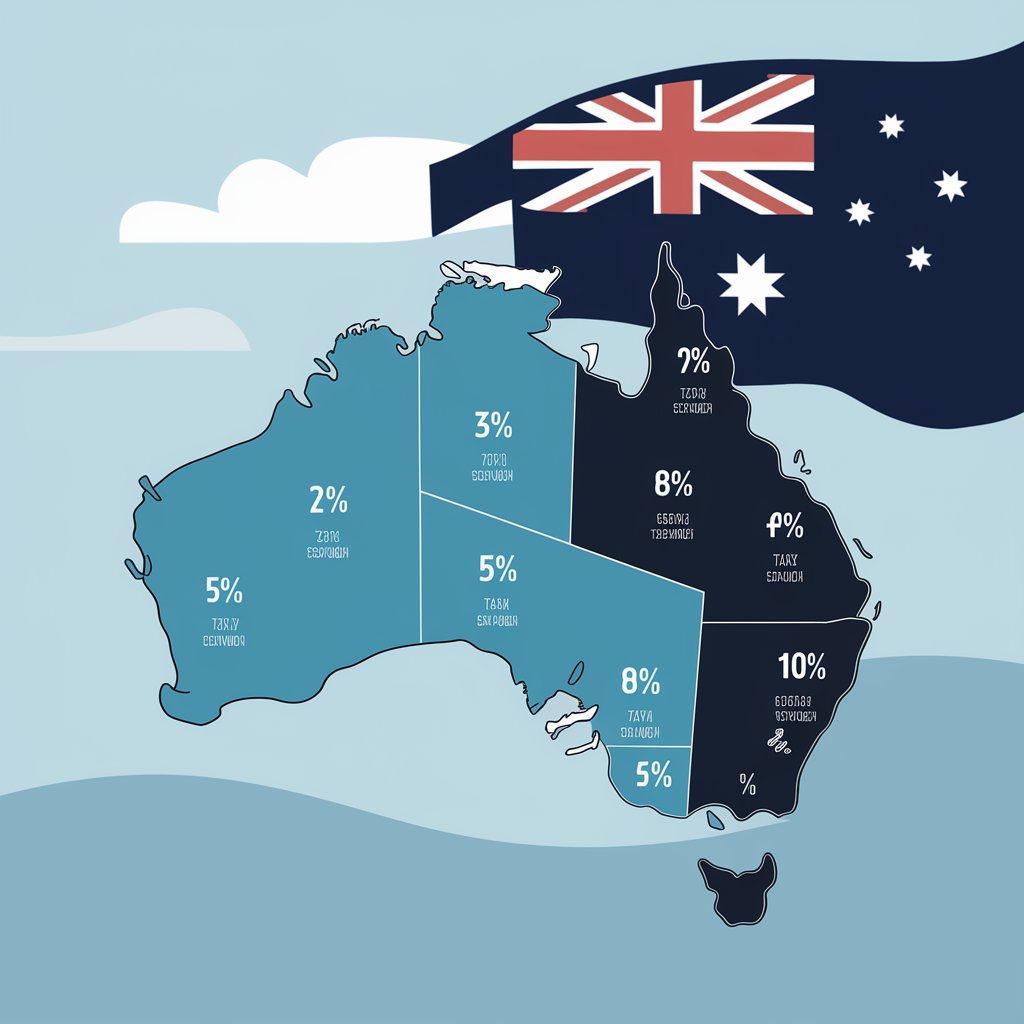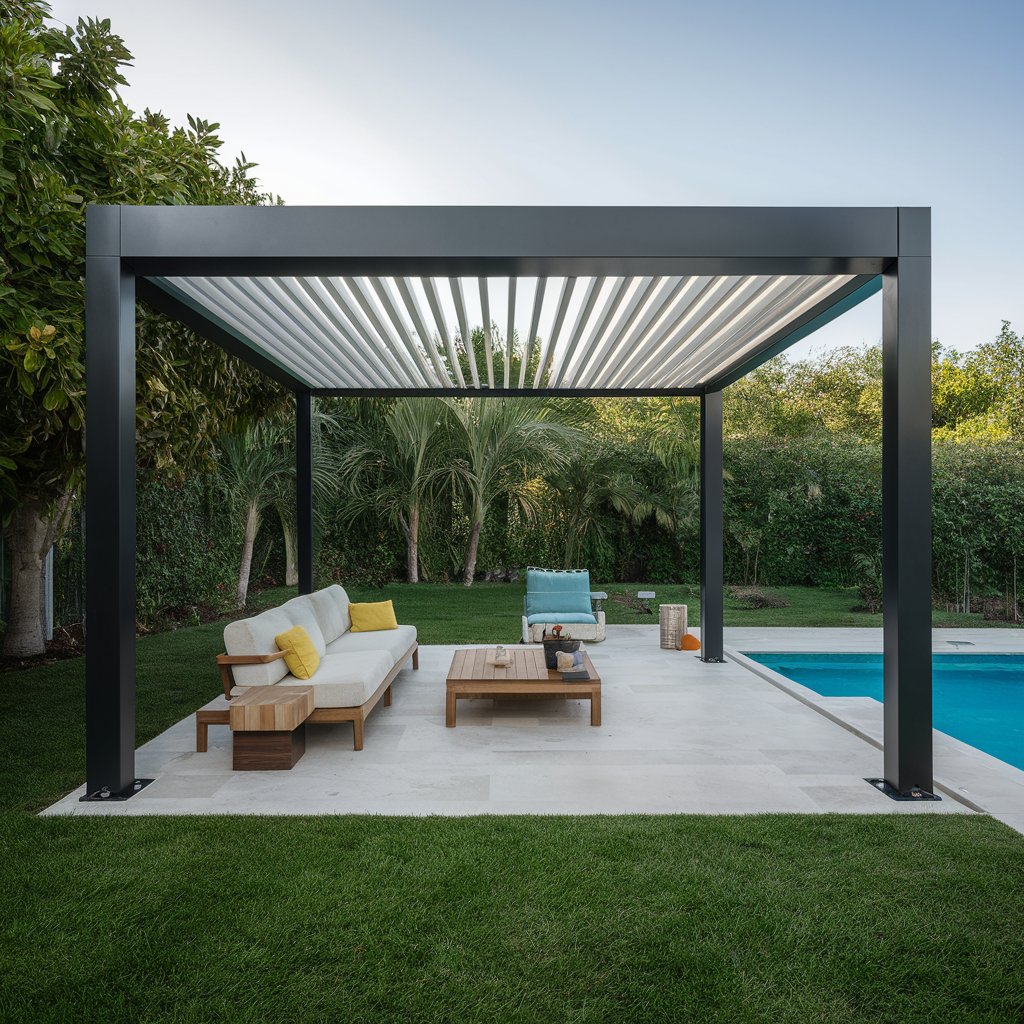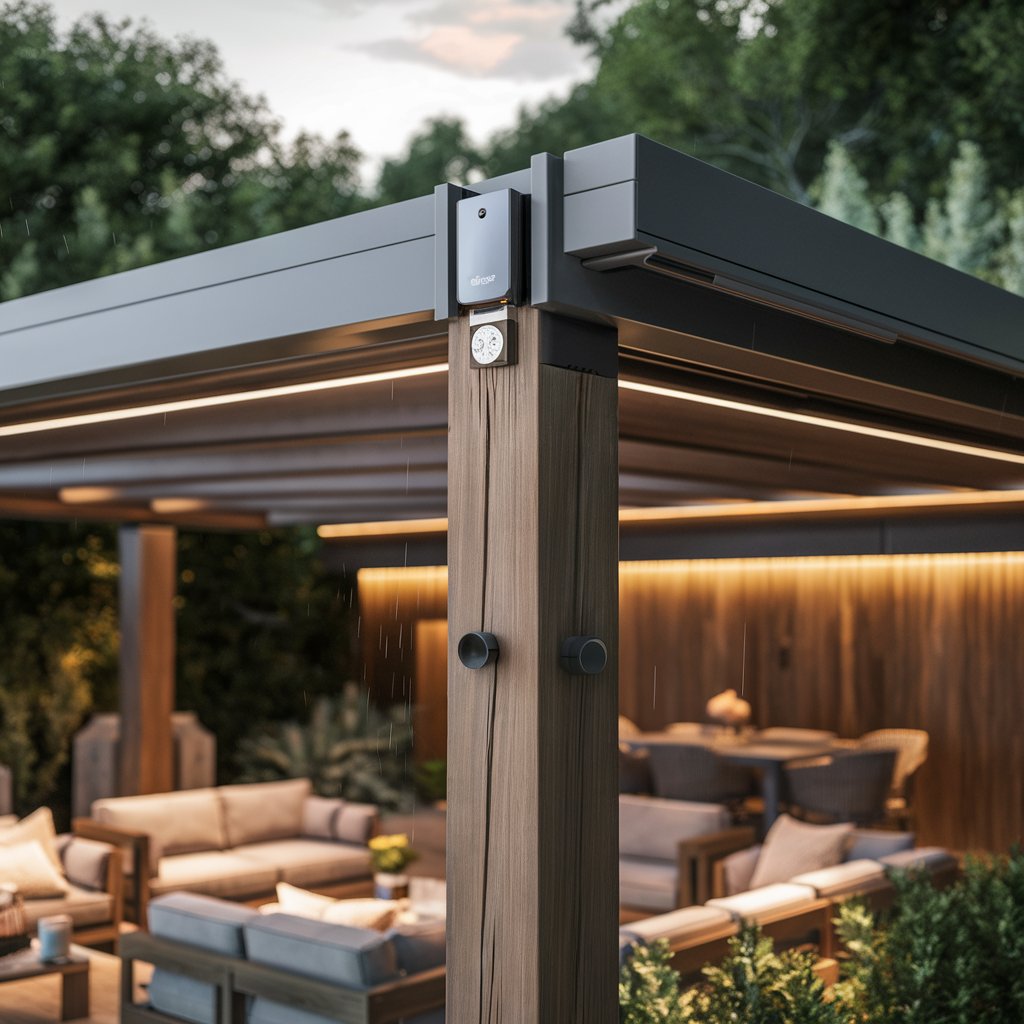Introduction
Louvered pergolas are becoming increasingly popular in Australia due to their versatile design and functionality, allowing homeowners and businesses to enjoy outdoor spaces all year round. These structures provide adjustable shading and ventilation, making them ideal for the varied Australian climate. However, importing louvered pergolas into Australia involves understanding the custom taxes and regulations that apply. This comprehensive guide aims to help importers navigate the complexities of custom taxes for louvered pergolas in Australia.
Understanding Custom Taxes in Australia
When importing goods into Australia, several types of taxes and duties may apply. These include import duties, Goods and Services Tax (GST), and other possible charges. The key to a smooth import process is understanding these costs and ensuring compliance with Australian regulations.
Key Factors Affecting Custom Taxes
- Classification of Goods: The classification of louvered pergolas under the Harmonized System (HS) code is crucial as it determines the duty rate applied. Proper classification ensures the correct tariff is used.
- Value of Goods: The value declared for customs purposes, including the cost of goods, insurance, and freight (CIF), influences the amount of duties and taxes payable.
- Trade Agreements: Australia has various free trade agreements (FTAs) with other countries, which can reduce or eliminate import duties on goods from member countries.
- Documentation and Compliance: Accurate and complete documentation is essential for customs clearance. Inaccuracies can lead to delays and penalties.
Classification of Louvered Pergolas
Louvered pergolas are generally classified under the category of “prefabricated buildings” or “structures and parts of structures” in the HS code system. The specific HS code used can impact the duty rate:
- HS Code 9406: This code covers prefabricated buildings, including pergolas, and is commonly used for such imports.
Accurate classification is vital to ensure the correct duty rate is applied. Misclassification can result in incorrect duty charges and potential legal issues.
Import Duty Rates
The import duty rate for louvered pergolas in Australia can vary based on the exact classification under the HS code. Generally, the duty rate ranges from 0% to 5%. The rate is influenced by factors such as the country of origin and the specific trade agreements in place.

Free Trade Agreements
Australia is part of several FTAs that can impact import duties. Key agreements include:
- Australia-United States Free Trade Agreement (AUSFTA): This agreement can provide duty-free access for certain goods imported from the United States.
- China-Australia Free Trade Agreement (ChAFTA): This agreement reduces or eliminates duties on goods imported from China.
- Japan-Australia Economic Partnership Agreement (JAEPA): Similar to ChAFTA, this agreement offers reduced duties on goods from Japan.
Utilizing these trade agreements can significantly reduce the cost of importing louvered pergolas.
Goods and Services Tax (GST)
In addition to import duties, a 10% GST is applied to most goods imported into Australia. The GST is calculated on the total value of the goods, including the CIF value and any import duty. This means that the GST is charged on the landed cost of the goods.
Additional Charges
Other charges that may apply when importing louvered pergolas into Australia include:
- Customs Processing Fees: These are fees charged by Australian Customs for processing the import declaration.
- Quarantine Inspection Fees: If the goods require quarantine inspection by the Australian Quarantine and Inspection Service (AQIS), additional fees may apply.
- Brokerage Fees: If using a customs broker to handle the import process, their service fees should be considered.
Steps to Ensure Smooth Importation
To navigate the complexities of importing louvered pergolas into Australia, follow these steps:
1. Proper Classification
Ensure the louvered pergola is correctly classified under the appropriate HS code. This helps in determining the correct duty rate and avoiding misclassification issues.
2. Accurate Valuation
Declare the correct value of the goods, including the cost of the pergola, insurance, and freight. Accurate valuation is essential for calculating duties and GST.
3. Utilize Trade Agreements
Check if any FTAs apply to the country of origin of the pergola. Utilize these agreements to reduce or eliminate import duties.
4. Complete Documentation
Prepare all necessary documentation, including commercial invoices, packing lists, bills of lading, and certificates of origin. Accurate documentation facilitates smooth customs clearance.
5. Consult with Experts
Consider consulting with customs brokers or trade experts who can provide guidance on specific requirements and assist with the import process. Their expertise can help avoid common pitfalls and ensure compliance.
Case Study: Importing Louvered Pergolas from China
To illustrate the process, let’s consider a case study of importing louvered pergolas from China to Australia.
Step 1: Classification
The louvered pergola is classified under HS Code 9406, which covers prefabricated buildings. This classification ensures the correct duty rate is applied.
Step 2: Valuation
The pergola is valued at $10,000 (CIF value, including cost, insurance, and freight). This value is declared to customs for duty and GST calculation.
Step 3: Apply Trade Agreement
China and Australia have a free trade agreement (ChAFTA). Under this agreement, certain goods imported from China may be eligible for reduced or zero import duties. The importer checks if the pergola qualifies under ChAFTA.
Step 4: Calculate Import Duty and GST
Assuming the pergola qualifies for a reduced duty rate of 3% under ChAFTA, the import duty is calculated as follows:
- Import Duty = 3% of $10,000 = $300
Next, the GST is calculated on the total value, including import duty:
- GST = 10% of ($10,000 + $300) = $1,030
Step 5: Prepare Documentation
The importer prepares the following documents:
- Commercial Invoice
- Packing List
- Bill of Lading
- Certificate of Origin (to benefit from ChAFTA)
Step 6: Customs Clearance
The goods are shipped to Australia, and the necessary documents are submitted to customs. The customs processing fee and any quarantine inspection fees are paid, and the customs broker handles the clearance process.
Outcome
The louvered pergola is successfully imported with a total cost breakdown as follows:
- CIF Value: $10,000
- Import Duty: $300
- GST: $1,030
- Customs Processing and Quarantine Fees: $150 (example amount)
- Total Cost: $11,480
By properly classifying the goods, utilizing the trade agreement, and ensuring accurate documentation, the importer successfully navigates the custom taxes and brings the louvered pergola into Australia.
Detailed Breakdown of Import Process
To further elaborate on the import process, let’s explore each step in greater detail.
Classification of Goods
The classification process involves identifying the correct HS code for the louvered pergola. This step is critical because it determines the import duty rate. HS Code 9406, which covers prefabricated buildings, is typically used for louvered pergolas. Accurate classification requires a thorough understanding of the HS code system and how different products are categorized.
Valuation of Goods
Valuation involves declaring the total value of the louvered pergola for customs purposes. This value includes the cost of the goods, insurance, and freight (CIF). Accurate valuation is crucial because it forms the basis for calculating import duties and GST. Under-declaring the value can lead to penalties, while over-declaring can result in higher taxes.
Utilizing Trade Agreements
Trade agreements like ChAFTA can significantly reduce the cost of importing louvered pergolas. These agreements provide preferential duty rates or duty-free access for goods from member countries. To benefit from these agreements, importers must provide a Certificate of Origin, which proves that the goods originate from a member country.
Preparing Documentation
Accurate and complete documentation is essential for smooth customs clearance. The key documents required include:
- Commercial Invoice: This document details the transaction between the seller and buyer, including the price and terms of sale.
- Packing List: This provides detailed information about the contents of the shipment, including dimensions and weight.
- Bill of Lading: This is a receipt issued by the carrier to the shipper, confirming that the goods have been received for shipment.
- Certificate of Origin: This document certifies that the goods originate from a specific country and is required to benefit from trade agreements.
- Customs Clearance Process
- The customs clearance process involves submitting the necessary documents to Australian Customs. The customs authorities review the documentation, assess the duties and taxes payable, and ensure compliance with Australian regulations. If all documentation is accurate and complete, the goods are cleared for entry into Australia.

Challenges in Importing Louvered Pergolas
While the process may seem straightforward, several challenges can arise during the importation of louvered pergolas into Australia. Understanding these challenges can help importers prepare and mitigate potential issues.
1. Classification Disputes
Disputes over the correct HS code classification can lead to delays and additional costs. It is crucial to ensure that the louvered pergola is accurately classified under the appropriate code. Consulting with customs brokers or trade experts can help resolve classification disputes.
2. Valuation Discrepancies
Discrepancies in the declared value of the goods can lead to penalties and delays. It is important to ensure that the value declared for customs purposes accurately reflects the CIF value. Providing detailed documentation and justifications for the declared value can help avoid discrepancies.
3. Compliance with Trade Agreements
To benefit from trade agreements, importers must ensure that all requirements are met, including providing a valid Certificate of Origin. Failure to comply with the requirements can result in higher duty rates and delays in customs clearance.
4. Documentation Errors
Incomplete or inaccurate documentation can cause delays in customs clearance. It is essential to double-check all documents for accuracy and completeness. Consulting with customs brokers can help ensure that all documentation is in order.
5. Quarantine Inspections
Louvered pergolas made from wood or other natural materials may require quarantine inspections by AQIS. These inspections can add time and cost to the import process. Ensuring that the goods comply with Australian biosecurity requirements can help expedite the inspection process.
Cost-Benefit Analysis of Importing Louvered Pergolas
Conducting a cost-benefit analysis is essential for importers to understand the financial implications of importing louvered pergolas into Australia. This analysis involves comparing the costs associated with importing the pergolas, including duties, taxes, and additional charges, against the potential benefits, such as market demand and profit margins.
Cost Considerations
- Import Duties and GST: Calculating the total duties and GST payable based on the CIF value of the pergolas.
- Transportation and Insurance: Estimating the costs of shipping and insuring the goods.
- Customs and Quarantine Fees: Including customs processing fees and potential quarantine inspection fees.
- Brokerage Fees: Considering the fees charged by customs brokers for handling the import process.
Benefit Considerations
- Market Demand: Assessing the demand for louvered pergolas in the Australian market.
- Profit Margins: Estimating the potential profit margins based on the selling price and total import costs.
- Competitive Advantage: Evaluating the competitive advantage gained by offering louvered pergolas in the market.
Conducting this analysis helps importers make informed decisions and ensures that the importation of louvered pergolas is financially viable.
Future Trends and Considerations
The importation of louvered pergolas into Australia is influenced by various trends and considerations that may impact future import activities.
1. Sustainability and Environmental Regulations
Increasing awareness of sustainability and environmental concerns is leading to stricter regulations on the importation of goods. Importers of louvered pergolas must ensure that the materials used comply with Australian environmental standards and biosecurity requirements.
2. Technological Advancements
Advancements in technology, such as automated customs clearance systems and digital documentation, are streamlining the import process. Embracing these technologies can help importers reduce processing times and improve accuracy.
3. Market Demand and Consumer Preferences
Market demand for louvered pergolas is influenced by consumer preferences for outdoor living spaces and energy-efficient solutions. Keeping abreast of market trends and consumer preferences can help importers meet demand and stay competitive.
4. Trade Policy Changes
Changes in trade policies and agreements can impact the cost and feasibility of importing louvered pergolas. Importers must stay informed about policy changes and adapt their strategies accordingly.
5. Economic Factors
Economic factors, such as exchange rates and inflation, can affect the cost of importing goods. Monitoring economic trends and adjusting pricing strategies can help importers mitigate financial risks.
Conclusion
Importing louvered pergolas into Australia involves navigating a complex landscape of custom taxes, duties, and regulations. Understanding the classification of goods, accurately valuing the goods, leveraging trade agreements, and ensuring complete documentation are crucial steps for successful importation. By addressing potential challenges and conducting a thorough cost-benefit analysis, importers can make informed decisions and optimize the import process.
As the demand for outdoor living solutions continues to grow, louvered pergolas offer a versatile and attractive option for Australian homeowners and businesses. By staying informed about future trends and adapting to changing regulations, importers can capitalize on market opportunities and contribute to the enhancement of outdoor spaces in Australia. Whether you are a seasoned importer or new to the market, this comprehensive guide provides the essential information needed to navigate custom taxes and successfully import louvered pergolas into Australia.



I was studying some of your content on this site and I conceive this internet site is really instructive!
Continue putting up.Money from blog